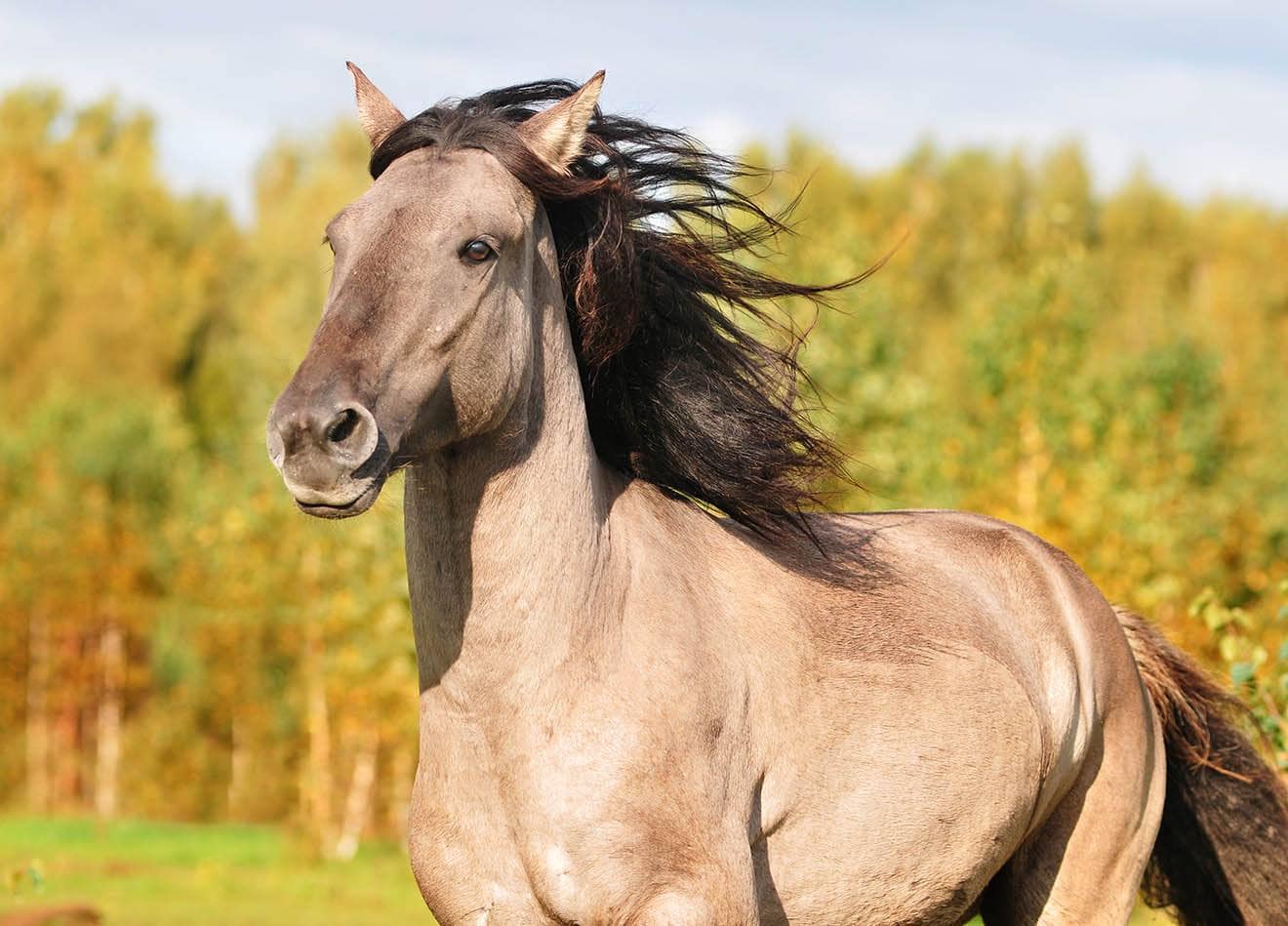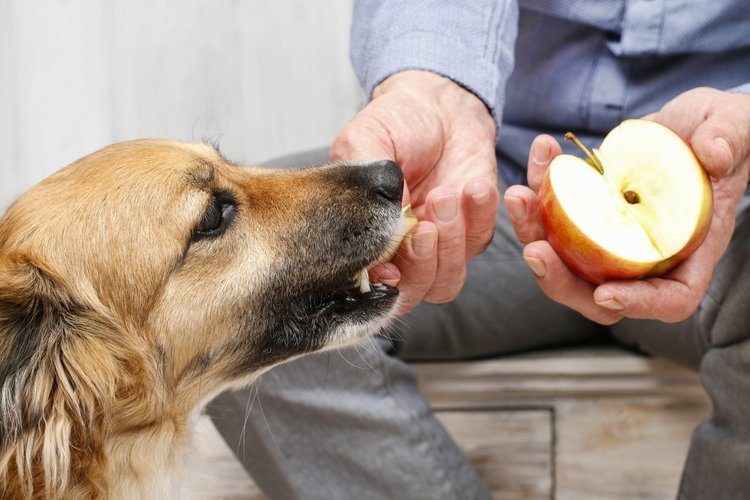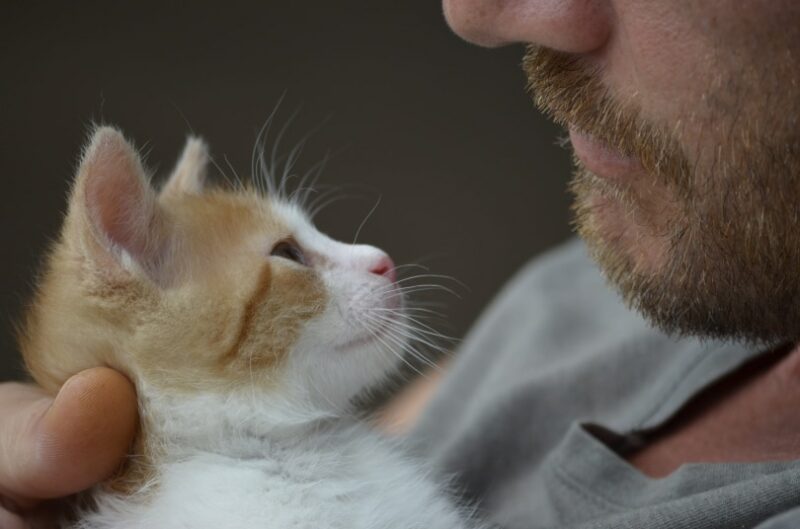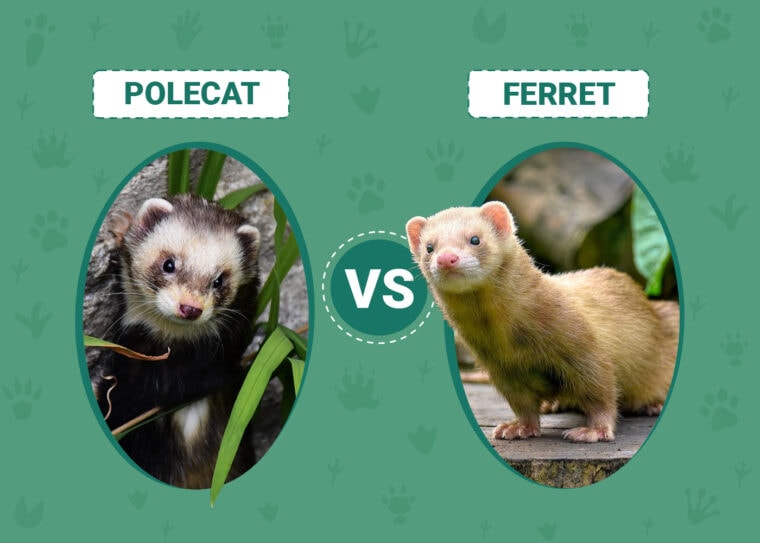
Click to Skip Ahead
Polecats and ferrets share the same ancestry and have incredible similarities. If you are not familiar with them, it can be difficult to tell one from the other. But you will notice their differences by the color of their coat, the shape of their body, and the size of their skull. If you are having a hard time figuring out which of the two pets to buy, this article will help you make the right choice.
Dive in to learn more!
Visual Differences

At a Glance
Polecat Overview
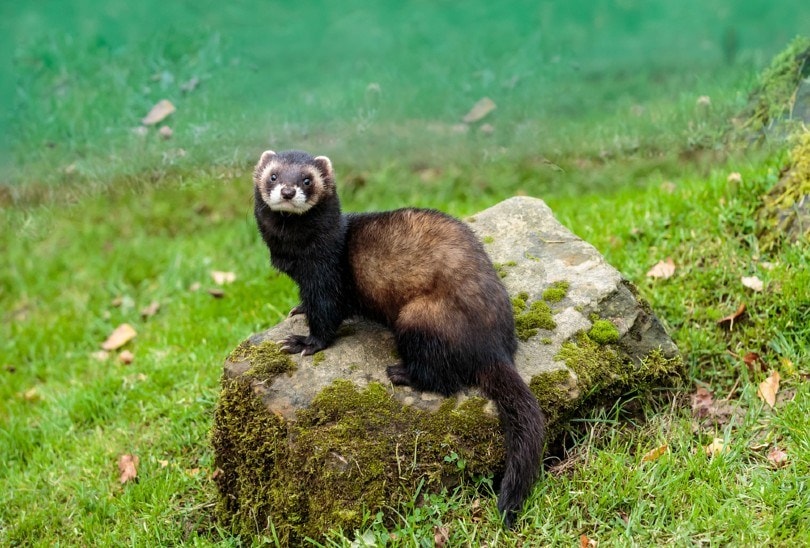
Polecats belong to the weasel family and are also referred to as “fitch” because of their fur. A polecat has a slender body — like a weasel only slightly larger. Although both genders share the same general appearance, males are bigger and heavier. These animals wear a coat that becomes thick and glossy during winter. This thins out and becomes faded during the summer.
The breed prefers a solitary lifestyle and will not mind being your sole pet. In fact, polecats can be very territorial and will release an oily and smelly secretion to mark their territory. They tend to have poor eyesight, but they compensate for this by having a heightened sense of smell.
Personality/Character
Polecats prefer a solitary lifestyle and are nocturnal animals. As such, they are more active during the night and will be asleep for most of the day. Both males and females can be very territorial and will fiercely defend their territories.
Because of their inquisitive nature, polecats are known for being escape artists. Therefore, do not leave them unsupervised unless they are in a safe and enclosed environment.
Appearance
Polecats have long and slim bodies with medium to long fur and short legs. They also have rounded ears, sensitive whiskers, and short muzzles. Although they are generally dark in color, their underfur is paler, which gives their bodies a slightly lighter appearance. You will especially notice this during winter when the underfur becomes longer and thicker.

Exercise
Polecats need regular exercises to stimulate their body and mind. Therefore, it is important to regularly take them out for walks. The good thing is that there are lots of options when it comes to leashes and harnesses for polecats.
Toys are also great if you want to keep your pet busy and occupied.
Health & Care
Just like other pets, polecats are susceptible to various health issues. It is common to find them with broken teeth. They are also at risk of suffering from fatal abscesses on the head, neck, and jaw. But you should probably worry more about fleas. Ensure the pet is sprayed at least once every month to prevent an infestation.
Other typical illnesses include the common cold, influenza, pneumonia, and distemper. Visit the vet frequently to have your pet examined for any of these health issues.
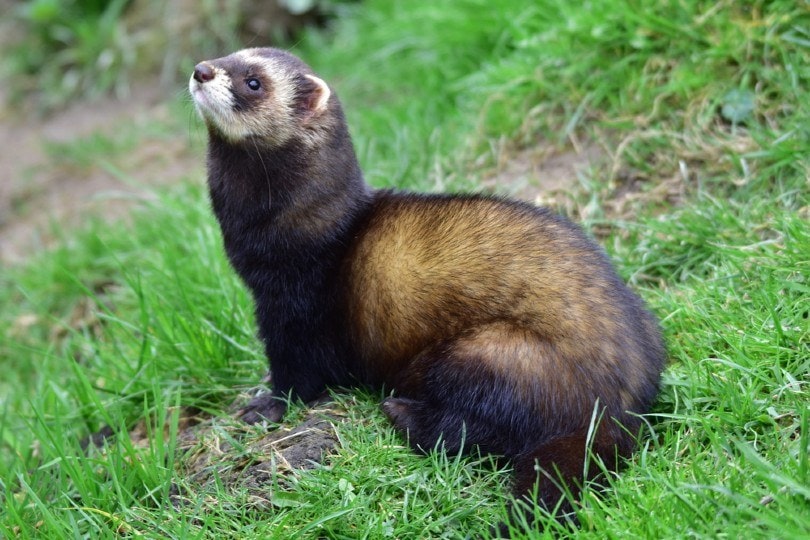
Diet and Nutrition
Polecats are carnivores and will eat frogs, rabbits, and small rodents in the wild. It is important to feed them a high protein diet. If you are not squeamish, you could buy them whole animals such as mice, rats, and chicks. But you will find a wide range of dry and wet polecat foods in the store.
Grooming
Polecats have moderate grooming needs and will clean themselves quite well. But remember to clean their ears and clip their long nails. Their nails can get caught in clothing, bedding, or carpet, which can lead to accidents.
Regular baths are not necessary for maintaining a clean coat. Besides, overbathing will strip the body of all its natural oils, thus making the skin dry and the fur brittle.
Suitable for:
Polecats are suitable for singles and families who want to keep a solitary pet.
Ferret Overview
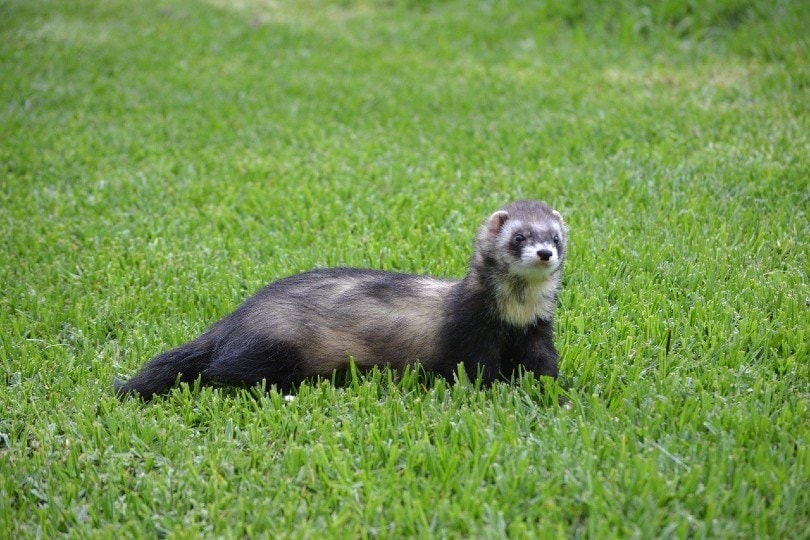
Ferrets are part of the Mustelidae family and have been utilized for pest control and hunting for centuries. Although they are still used for this purpose today, they are becoming increasingly popular as pets.
These mammals are crepuscular. This means that they tend to be more active during dawn and dusk. They love sleeping and could sleep for more than 18 hours a day.
Ferrets are naturally curious, lively, and fun-loving. That means they can get bored easily when left alone. Preferably, you should keep them in small groups of the same sex. If you want to keep the two sexes together, ensure they are neutered.
However, a ferret can also survive on its own provided you play with it regularly to kick away boredom.
If you have other pets around the house, a ferret will get along with them just fine. But ensure you supervise them when playing together. Unfortunately, ferrets will bite when startled. This means that they are not the ideal pet for small children.
Personality/Character
Ferrets are naturally curious and enterprising. They can also be stubborn and tenacious. Although they will sleep up several hours a day, they can be very playful when awake. They are very social and will often invite you to engage with them. When left alone, they will crawl through anything they come across, including piping, clothing, paper bags, and boxes.
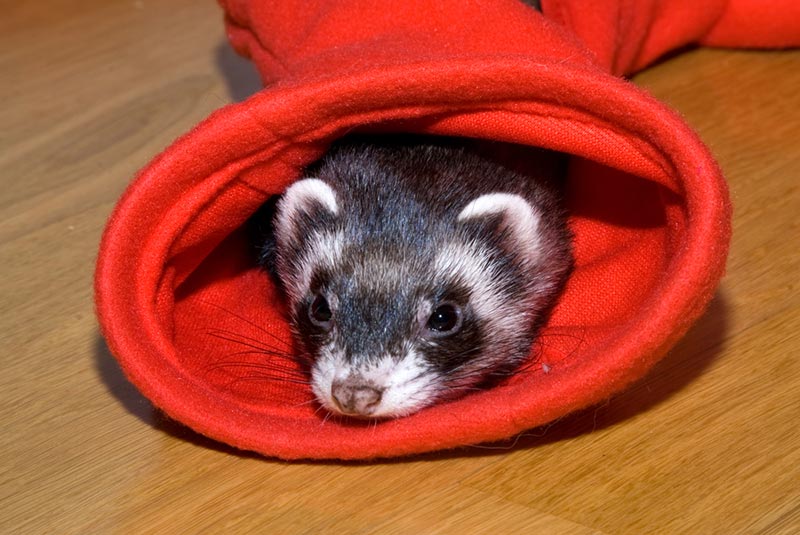
Appearance
Ferrets have sinuous, long bodies with short legs and a short tail. You will also easily notice their small ears, sharp teeth, and cone-shaped noses. Although their coats come in varying colors, most ferrets are albino, chocolate, cinnamon, sable, black sable, silver, and dark-eyed white. These animals can grow up to 20 inches long.
Exercise
Ferrets need stimulation in the form of play and exercise to stay healthy. Consider buying a play enclosure where your pet can play safely. This can either be separate or part of their housing. You might also want to buy your pet some toys. But be keen to ensure that they are sturdy and have no loose parts because these can be swallowed and block their bowel.
Health & Care
Just like other pets, Ferrets have their fair share of health issues. Before you buy one, ensure they have been vaccinated against rabies and distemper. They should also be neutered before sexual maturity. Neutering protects the female from conditions such as pyometra and aplastic anemia. It also reduces the strong, pungent smell produced by males. Fortunately, a good breeder will have implemented these measures already.
Ferrets also have a pretty high risk of getting fleas. Other common health issues among these mammals include human influenza, pancreatic cancer, skin tumors, and adrenal disease. Visit the vet regularly to have your pet examined for potential health issues.
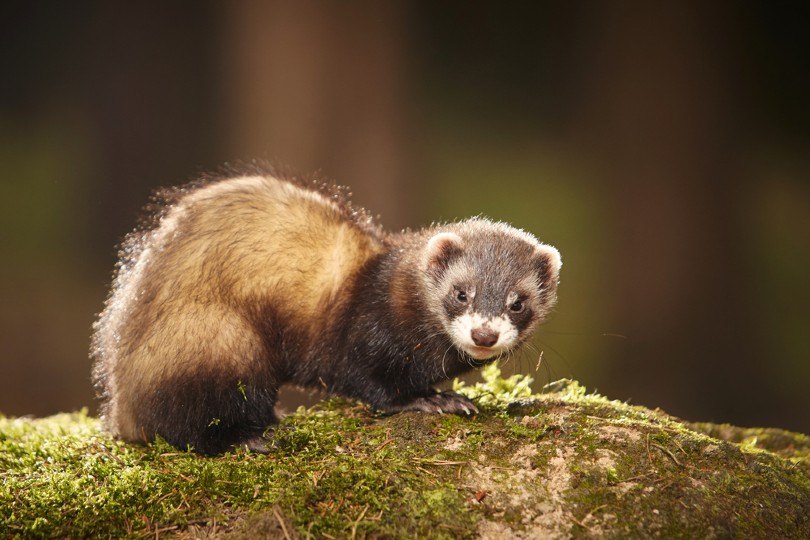
Diet and Nutrition
Just like cats, ferrets are carnivores and require a diet rich in proteins. You could either feed them commercial ferret food or a raw diet of bones, skin, and organs. You could also choose to mix the two. However, do not feed them processed meat or cat and dog food. Occasional treats are allowed, provided you do it with moderation.
You must always provide clean drinking water. Use a heavy bowl or train your pet to drink from drinker bottles. Just make sure to keep the water away from the litter box. It is important to note that ferrets are lactose intolerant. Therefore do not feed them dairy products. Also, avoid chocolate, raisins, and grapes as they are poisonous to ferrets.
Grooming
Just like cats, ferrets do a good job of cleaning themselves. If you keep a bowl of water in their house, they will use it to clean their face. You may be tempted to bathe them in the hope that you will eliminate their odor, but that is a bad idea. Cleaning will strip the body of all the natural oils that cause the mild stench, but the body will only compensate by producing more.
While you should keep bathing at a minimum, you should not forget to trim their nails whenever they get long. Long and sharp nails get caught in clothing, carpet, and bedding and result in injuries. Also, make sure to clean their ears once in 2 weeks because they can get quite waxy.

Suitable for:
Ferrets are best for active singles and families looking for a friendly and affectionate pet.
Which Breed is Right for You?
Polecats tend to prefer solitary and are less social compared to ferrets. That makes ferrets more attractive as pets. However, both breeds can make excellent companions. If you prefer having more than one pet, the ferret is the better choice. They thrive in a group environment and will be more than happy to live alongside their counterparts. But if a single pet is all you can handle right now, you would be better off buying a polecat because they enjoy living alone.
See Also:
- Ferret vs. Cat: Which Should I Choose? Key Differences (With Pictures)
- Pitbull vs German Shepherd: Main Differences (With Pictures)
Featured Image Credit: Top – ajwetton, Pixabay | Bottom – ambquinn, Pixabay




